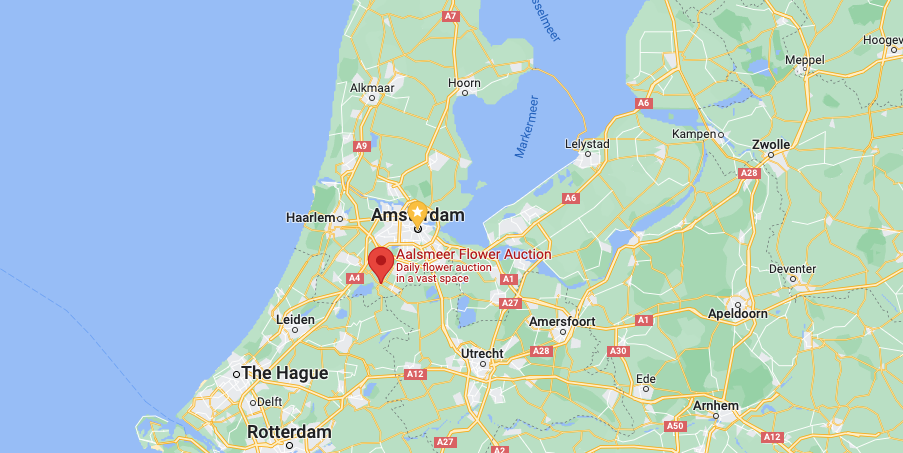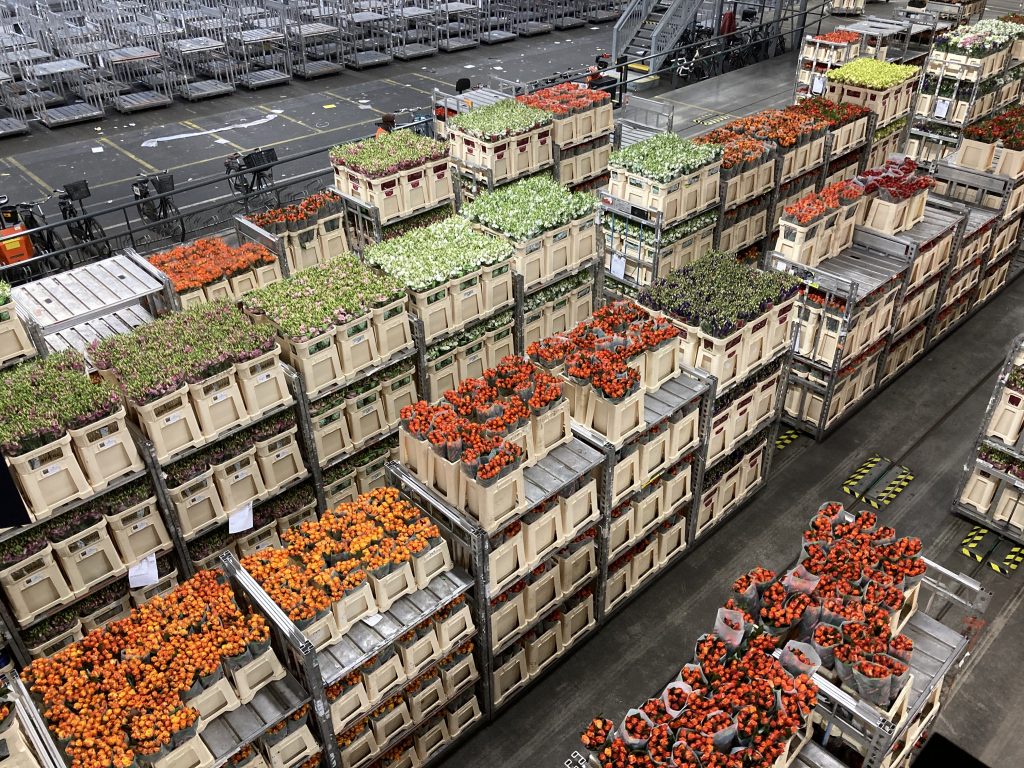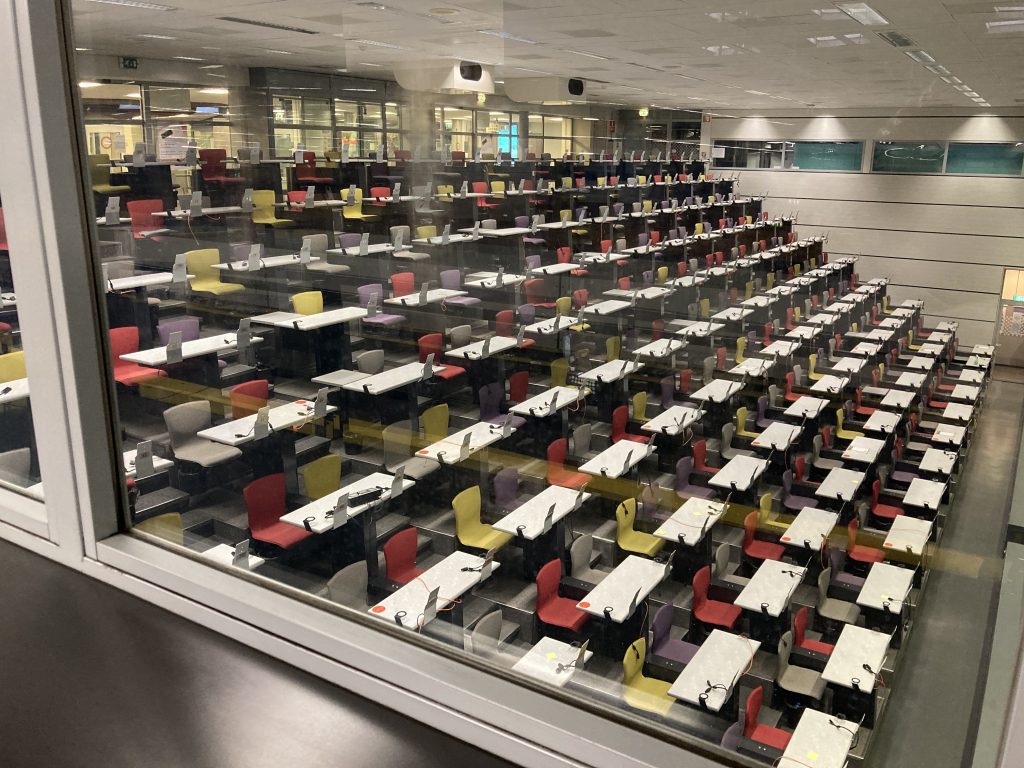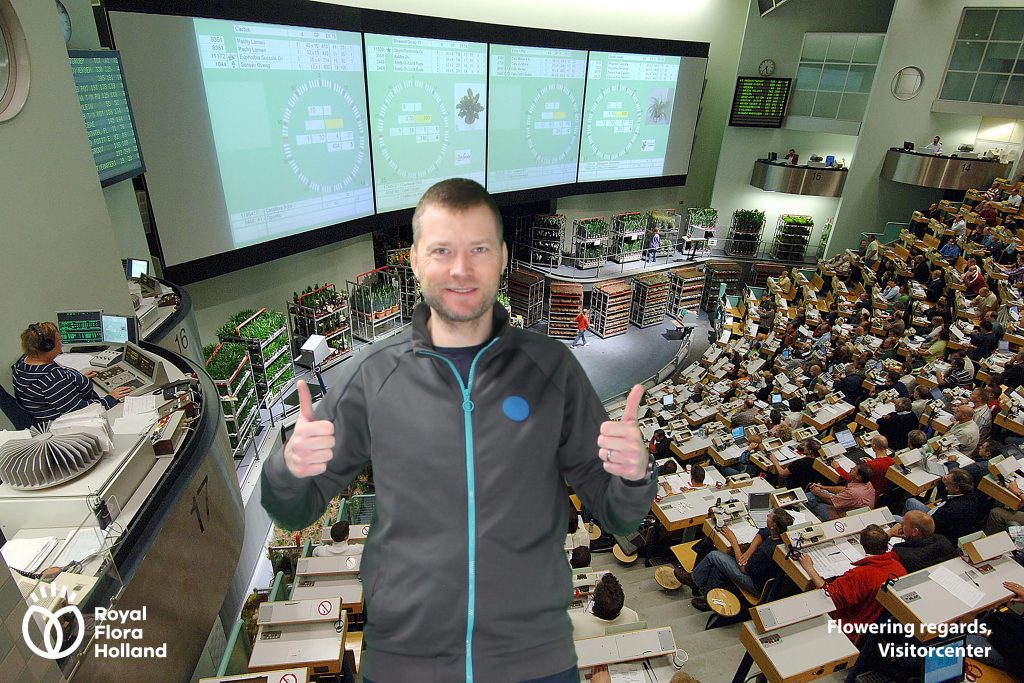The Dutch flower auction
In March 2022 I achieved a long standing ambition – to visit the world famous Dutch flower auction in Aalsmeer. I needed to teach on our Berlin campus and decided to take the Eurostar from London direct to Amsterdam. The Royal FloraHolland building is around 20km from Amsterdam Centraal with good bus routes and, of course, is easy to reach with Uber.
There are really two things that you visit here. The first is a market – you are essentially touring a big warehouse, which is the site for a large share of the global flower trade. But what makes this particular market so special is that it uses a Dutch auction method. While the most famous auctions like Christie’s and Sotherby’s are ascending auctions (the auctioneer gradually raises the price until there’s a winning bidder) the Dutch flower auction uses a descending one. This can often be quicker and therefore more suited to perishable items like fresh produce.
Having pioneered the flower industry in the 17th century, there are several reasons why the Netherlands became the dominant player:
- Good growing conditions (tulips were first imported to region around 1570 and the sandy, coastal grounds are conducive for flower cultivation)
- Good transport links (historically this was the river and canal system that linked the sea port to the heart of Europe, more recently this includes Amsterdam’s Schipol Airport, which since the 1960s has provided direct flights to important markets such as New York and Tokyo)
- A strong financial centre (the Amsterdam stock market is the oldest in the world)
Here is why the Dutch Flower Cluster case is so relevant:
- The Netherlands is one of the twenty largest economies in the world and is a leading global knowledge economy
- Agriculture and food are one of the leading industries in the Netherlands and the flower cluster accounts for 43% of the global cut flower exports
- The Netherlands accounted for over 80% of the flowers imported in Germany (30%), UK (21%), France (9.65), Denmark (2.7%), Switzerland (3.1%), Italy (4.3%), Austria (2.5%), and Poland (2,7%).
Unfortunately, I arrived too early and had to wait for the visitor centre to open:
The building is very large and the tour takes place along an elevated walkway – the first part is above some empty trolleys:
I wasn’t sure if these flowers were arriving or leaving but you can see that some of the logistic system is automated:
The overhead shuttle system allows sold flowers to be carried outside the premises, and avoid having to be loaded and unloaded onto vehicles:
Some of the flowers are boxed up while some are open. Those in boxes are subject to inspection to ensure that buyers are receiving a quality product.
I really enjoyed watching the activity taking place – the scooter drivers wear headsets to tell them where to go:
I realised that I should have been recording in landscape – this is my favourite video, showing how markets look chaotic but lead to a spontaneous order:
Here are some key facts and figures:
This graphic shows that the biggest import country is Kenya.

Here is a time-lapse of the trolleys:
…”we’ve got to keep on moving”!
The buggies are electric and here’s where they get stored:
This is my favourite photo from the tour:

Here is my overview of how the auction mechanism works:
When I was touring the site, I thought that the physical auction room was no longer in use. Here is a photo of it:

In fact, the auction room is still used sometimes, it’s just that most of the traders who are on site prefer to access the system from their own back offices:
Right at the end of the tour I discovered the old auction room. This was used when all traders had to physically assemble on site.
At the end of the tour there’s an interactive exhibit to learn how the clock works. Here I am having a go:
This is the official Royal FloraHolland video showing how the Dutch clock works:
Right at the back of the hall is a loading area:
After the tour I reflected on the relevance of the auction within the broader Dutch flower cluster:
Finally, here is the new trailer for Royal FloraHolland. Do you think I managed to get a ride on the trolleys??
I hope you enjoyed the tour!

You can test you knowledge of the Dutch flower auction with this quiz:
More resources:
Porter, M.E., Ramirez-Vallejo, J., and Van Eenennaam, F., ‘The Dutch Flower Cluster’, Harvard Business School Case No. 9-711-507, November 2013 (and teaching note).
This page can also be viewed as a Twitter thread.